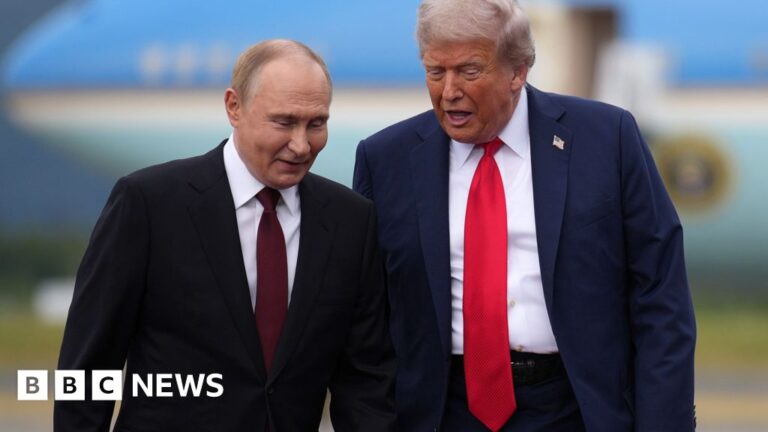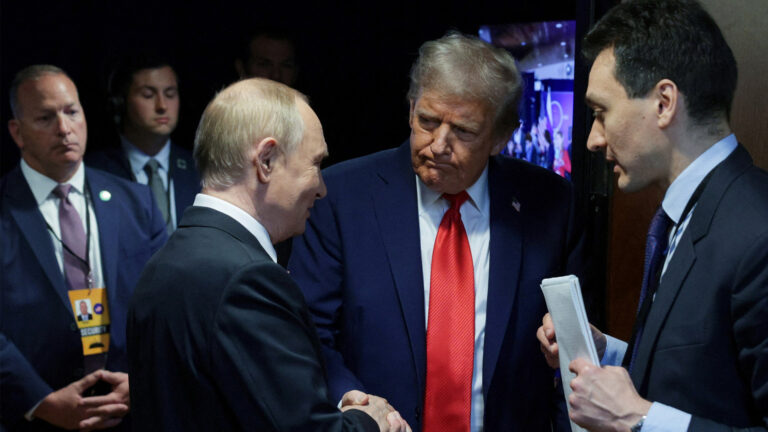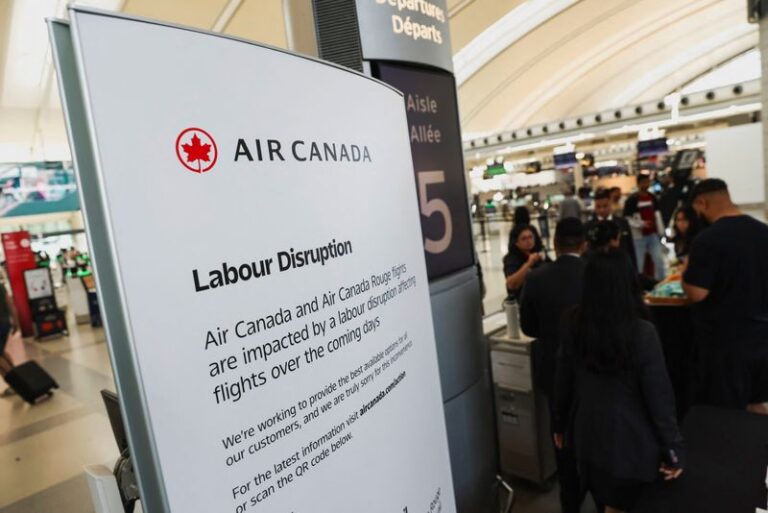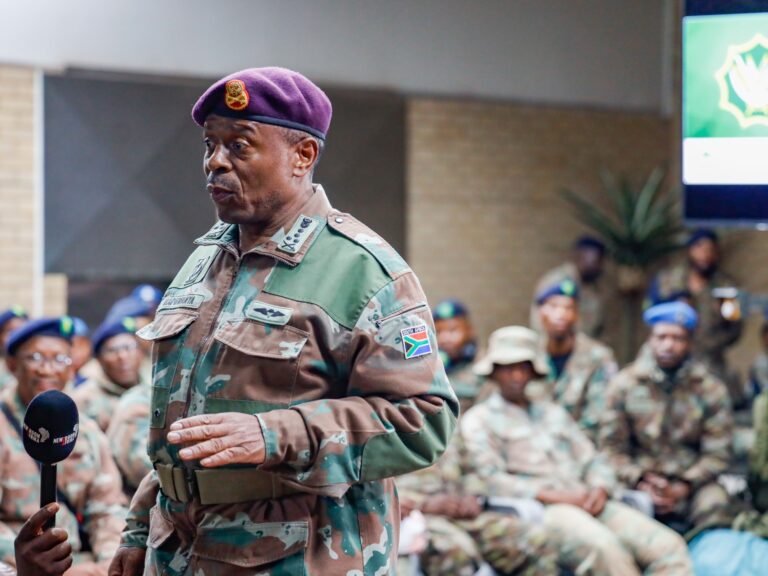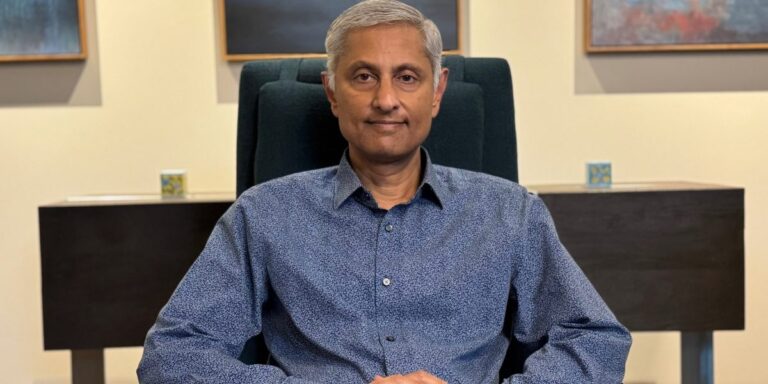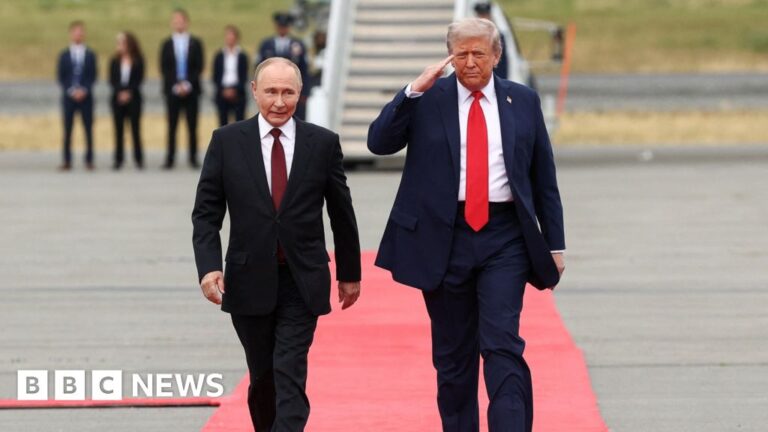BBC News in Anchorage
Donald Trump has said he, along with the presidents of Russia and Ukraine, have determined that a peace agreement was preferable to a ceasefire in the conflict between the two warring nations.
Writing on Truth Social after departing a high-stakes meeting with Russian leader Vladimir Putin in Alaska without reaching any deal, the US president said that ceasefires “often times do not hold up”.
Trump had earlier told the world’s media that “great progress” was made during the meeting but “we didn’t get there” when it came to making a deal.
On his flight back to Washington, he held a call with Ukrainian President Volodymyr Zelensky, who later said he would travel to Washington DC on Monday.
Trump said it had been “a great and very successful day in Alaska” after arriving back in Washington.
He added that the meeting with Putin had gone “very well”, as had phone calls with Zelensky, European leaders and Nato Secretary-General Mark Rutte.
“It was determined by all that the best way to end the horrific war between Russia and Ukraine is to go directly to a Peace Agreement, which would end the war, and not a mere Ceasefire Agreement, which often times do not hold up,” he wrote.
“If all works out” with Zelensky on Monday “we will then schedule a meeting with President Putin”, Trump added.
“A real peace must be achieved, one that will be lasting, not just another pause between Russian invasions,” Zelensky said following the call.
The potential breakthrough came after a highly stage-managed summit that appeared to yield no tangible results.
The leaders’ arrival at Joint Base Elmendorf-Richardson in Anchorage was carefully choreographed.
Putin, who is facing an International Criminal Court arrest warrant for alleged war crimes in Ukraine, stepped off his jet and onto a red carpet to be warmly greeted by Trump.
Over the roar of a B2 bomber overhead, the two leaders posed for photos before climbing in Trump’s presidential vehicle, known as The Beast.
But despite the pageantry and public shows of geniality – as well as the Kremlin’s earlier estimate that the meeting could last six or seven hours – Trump and Putin emerged less than three hours later with just a joint statement to the press.
Putin said that, in order to make a “settlement lasting and long-term, we need to eliminate the root causes of the conflict” in Ukraine.
The phrase indicated that Putin has not budged from his longstanding position that Ukraine should withdraw from four regions partially occupied by Russia – Donetsk, Luhansk, Kherson and Zaporizhzhia – and give up its efforts to join the Nato military alliance.
Zelensky has ruled out retreating from the four embattled region, warning that would leave the door open for an emboldened Russia to mount another offensive in the future. Moscow launched its full-scale invasion of Ukraine more than three years ago, after annexing the Crimean peninsula in 2014.
Putin also urged Ukrainians and Europeans to “not throw a wrench” into the peace process. Trump remained silent as his guest spent about eight minutes addressing the media.
After being given the floor, the US president said he had a “fantastic relationship with President Putin. Vladimir,” switching to the Russian leader’s first name.
Even though “many points were agreed to”, he said, “a few” remain, adding that “one is the most significant” – without specifying what that key sticking point was. Neither took questions.
The two also did not attend the planned bilateral “working lunch” that was set to follow the talks.
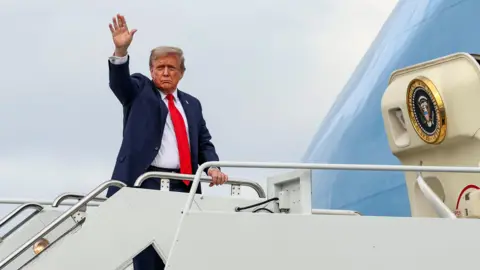 Reuters
ReutersAn interview on Fox News after the meeting offered few additional details.
The meeting went “very well”, Trump told host Sean Hannity, adding “maybe we’ll have a good result”.
Heading into the Alaska meeting, Trump had threatened “very severe consequences” if his Russian counterpart did not agree to end the war. In July, he said he’d impose 100% secondary tariffs targeting Russia’s remaining trade partners if a peace deal with Ukraine was not reached within 50 days.
But questioned on Fox News over where the meeting left those threats, Trump said: “We don’t have to think about it today.”
“Maybe in two weeks, three weeks,” he said, “but the meeting went very well.”
Asked about a possible trilateral summit including Zelensky, Trump said: “They both want me there and I’ll be there,” without giving a date or location for meeting.
Conspicuously absent from the Alaska meeting was the Ukrainian leader who, like Putin, has elicited a range of reactions from Trump since he returned to the Oval Office.
The two had a lengthy call on the flight back to Washington, before other Nato leaders including UK Prime Minister Sir Keir Starmer joined the conversation.
Zelensky said he supported Trump’s proposal for a trilateral meeting and that sanctions against Russia should be strengthened if Moscow “tries to evade an honest end to the war”.
“All issues important to Ukraine must be discussed with Ukraine’s participation, and no issue, particularly territorial ones, can be decided without Ukraine,” he added.
He noted “positive signals from the American side regarding participation in guaranteeing Ukraine’s security” – something European allies have called for as part of a combined effort to prevent another conflict.
Monday’s meeting will see Zelensky return to the White House for the first time since he clashed with Trump in an explosive meeting in February.
They appeared to patch things up on the sidelines of Pope Francis’s funeral in April, with the White House describing the 15-minute meeting as “very productive”.
Those in Ukraine may breathe a sigh of relief that no deal that would cede territory to Russia had been reached on Friday.
But they may also be alarmed that Putin continued to use rhetoric that seeks to justify the original objective of the invasion – to dismantle Ukraine as an independent state.


